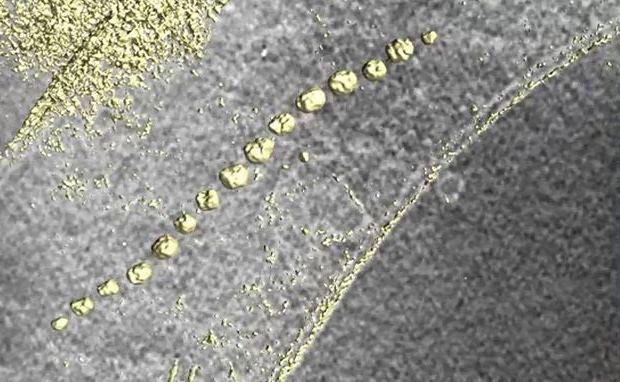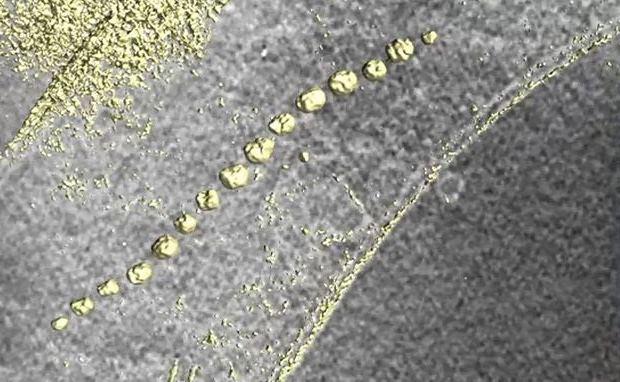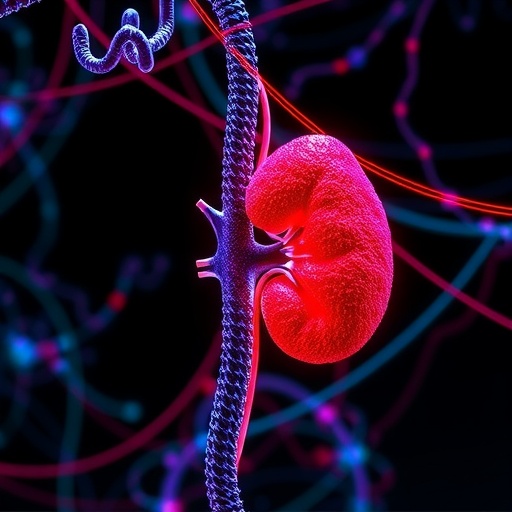
Credit: 10.1039/C7NR08493E
Magnetotactic bacteria are usually found in freshwater and marine sediments. One species, Magnetospirillum gryphiswaldense, is easily cultivated in the lab – with or without magnetic nanoparticles in their interior depending on the presence or absence of iron in the local environment. "So these microorganisms are ideal test cases for understanding how their internal compass is constructed", explains Lourdes Marcano, a PhD student in physics at Universidad del Pais Vasco in Leioa, Spain.
Chain of magnetic nanoparticles form compass
Magnetospirillum cells contain a number of small particles of magnetite (Fe3O4), each approx. 45 nanometers wide. These nanoparticles, called magnetosomes, are usually arranged as a chain inside the bacteria. This chain acts as a permanent dipole magnet and is able to passively reorient the whole bacteria along the Earth's magnetic field lines. "The bacteria exist preferentially at the oxy/anoxy transition zones", Marcano points out, "and the internal compass might help them to find the best level in the stratified water column for satisfying their nutritional requirements." The Spanish scientists examined the shape of the magnetosomes and their arrangement inside the cells using various experimental methods such as electron cryotomography.
Isolated chains examined at BESSY II
Samples of isolated magnetosome chains were analysed at BESSY II to investigate the relative orientation between the chain's direction and the magnetic field generated by the magnetosomes. "Current methods employed to characterise the magnetic properties of these bacteria require sampling over hundreds of non-aligned magnetosome chains. Using photoelectron emission microscopy (PEEM) and X-ray magnetic circular dichroism (XMCD) at HZB, we are able to "see" and characterise the magnetic properties of individual chains", explains Dr. Sergio Valencia, HZB. "Being able to visualise the magnetic properties of individual magnetosome chains opens up the possibility of comparing the results with theoretical predictions."
Helical shape
Indeed, the experiments revealed that the magnetic field orientation of the magnetosomes is not directed along the chain direction, as assumed up to now, but is slightly tilted. As the theoretical modelling of the Spanish group suggests, this tilt might explain why magnetosome chains are not straight but helical in shape.
Outlook: Nature as a model
A deeper understanding of the mechanisms determining the chain shape is very important, the scientists point out. Nature's inventions could inspire new biomedical solutions such as nanorobots propelled by flagella systems in the direction provided by their magnetosome chain.
###
Media Contact
Antonia Roetger
[email protected]
@HZBde
http://www.helmholtz-berlin.de
Original Source
https://www.helmholtz-berlin.de/pubbin/news_seite?nid=14803&sprache=en&typoid=1 http://dx.doi.org/10.1039/C7NR08493E





